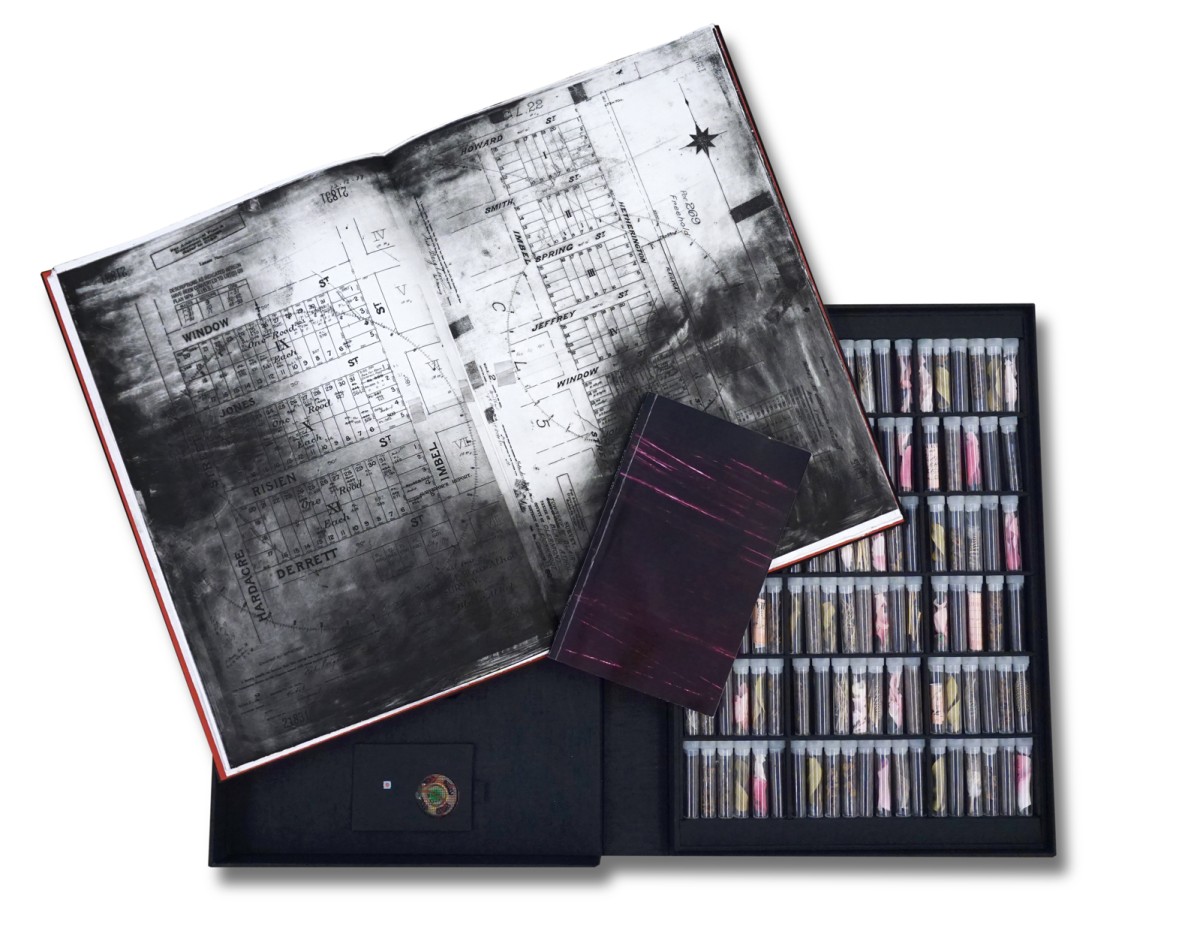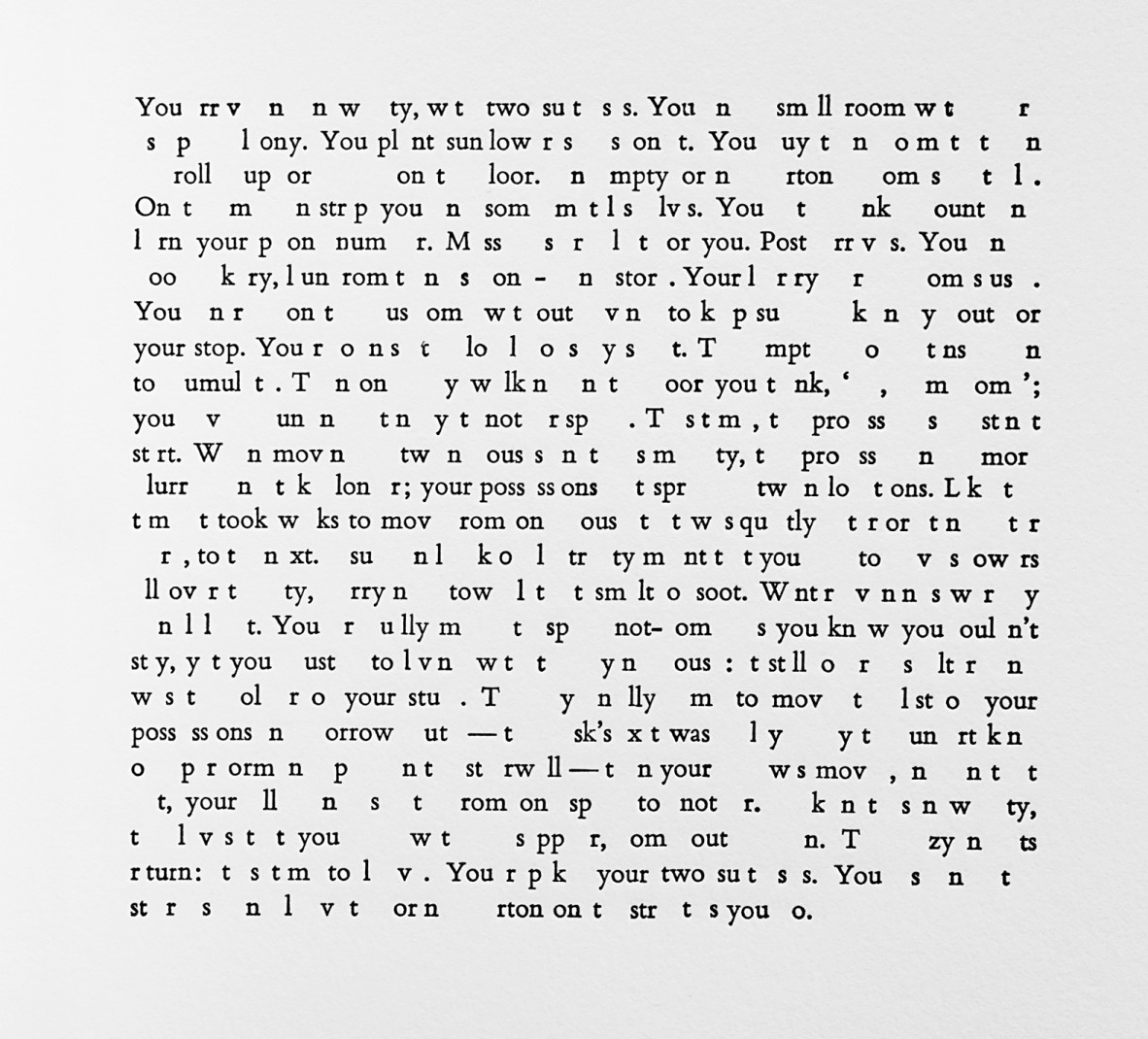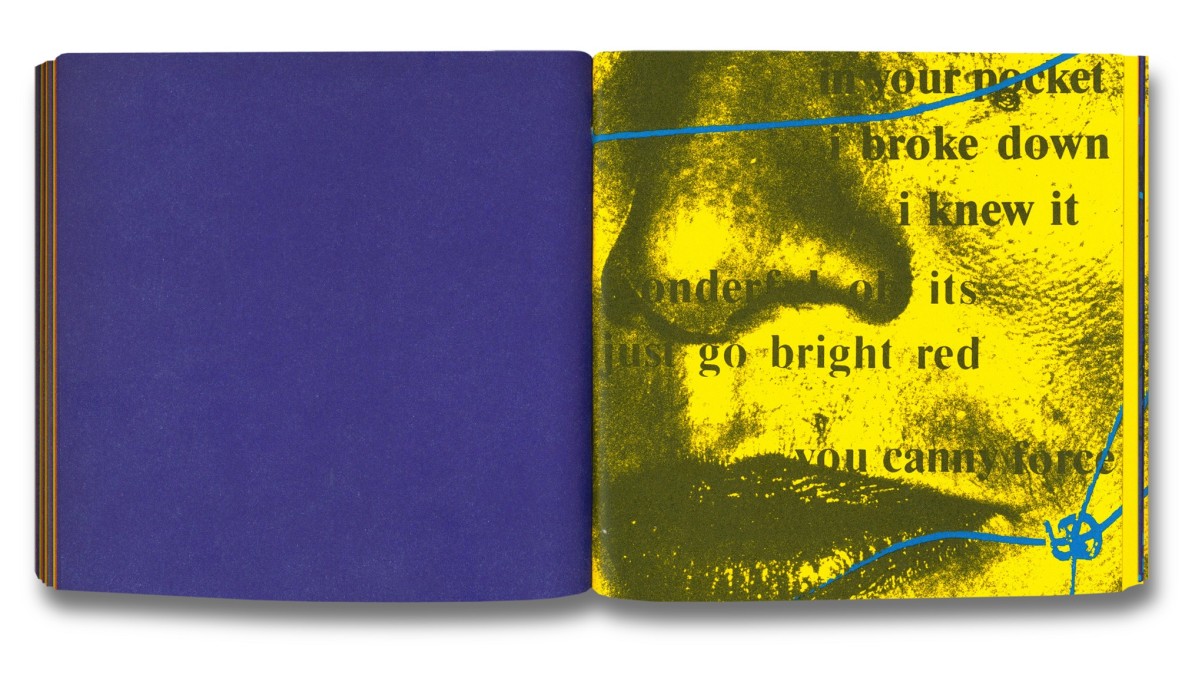Siganto Foundation Fellow Dr Lyn Ashby is close to completing his project investigating 'story telling' in the Australian Library of Art's collection of artists' books. Lyn reflects on findings and interpretations of story telling with this concluding post No more happy ever after.
Tell me a story. Or I'll tell you one. Our usual stories need time (as a basic structure) to do their work. This is to generate atmosphere, develop characters, unfold plots, sketch the "narrative arc". The way any particular medium imagines the basic dimensions of time and space will surely qualify the nature of the stories it can propose. What happens to narrative in the case of the medium of artists' books in which these dimensions are often devised in experimental and unconventional ways?
Time in such books can often appear to be the simple series of page-by-page openings with no special allegiance to the basics of storytelling such as linearity, sequentiality, hierarchy, chronology or causation. Instead, artists' books often present 'simple' juxtapositions (elements of apparently equal import and meaning), casual links (rather than causal chains), that are synchronous (rather than sequential, linear or chronological), all of which partakes of the liberty of collage. As often as not, rather than a chronology, time might be serial, cyclic, circular, layered or webbed. Or time and its tyranny is jettisoned altogether, arising only in the revelatory process of the reading itself. Many works promote, or even hinge upon the resultant ambivalence of meaning.
Thus, it often seems more valuable to talk about the meaning or affect of a work (however diffuse, obtuse or mysterious) rather than its story, just as we might with a single visual work of art. Even though the work is a proposition made over time (usually in a series of unfolding pages), with no traditional story structure and thus avoiding linearity and chronology, its process of telling might work instead by a more subtle and entrancing accumulation of affects. It is a process that more resembles multiple-triangulations, like sending out a series of flares into the darkness (caught only as glimpses) in an attempt to map out a field or network of possible and potential meanings. In this way, a work might orbit a theme, concern, issue, feeling or even just a single image from a variety of angles or layers. Or we might find the exploration of an idea using a collection of different forms or methods.
Julie Barratt's Blair Athol recut, for example, a work made with a 2015 Siganto Creative Fellowship, about the displacement of an entire town in the late 1970s to make way for mining concerns, assembles a variety of forms. These include books (one large book simulating the visual obliteration of the town as layout drawings disappear into a murky blackness, and one small book that offers a personal document of details and feelings about the displacement), an audio component (the reading of a poetic response to the town's displacement) and an array of small glass phials of objects as residual reminders of a once living town. This is a compounding assortment of objects (all housed in a fittingly tomb-like black box) in response to a complex assortment of events and feelings.

Such a matrix of methods is a satisfying invocation of various dimensions of the human quest and need for meaning that is also (paradoxically) more personal, leaving imagining space around and between the elements (a space that Marshall McLuhan called the "resonant interval") for each reader to dream and determine their own understanding of value and meaning. And this meaning frequently more directly inheres in the actual means and methods of the book. Its meaning is as much embodied in the structures and evoked by the materials, as much as expressed in its conceptual adventures or experiments.

Marian Macken's From a to z, two small artists' books (in the SLQ collection), made in 2008, about the notions of gathering and dispersal, oblige the reader to directly enact these very ideas, incrementally, in the process of reading the books. The one-page, letterpress-printed story in each book is either assembled letter-by-letter (in alphabetic order) or vanishes alphabetically over the book's sequence of pages. Page upon page, the reader is faced with the visual fact of an incomplete set of letters according to its position in a sequence that is assembling or demolishing linguistic sense. This reading process performs the theme of the work.

"Desire, the collective unconscious"
Another example of how a book might approach its meaning with the orchestration of its components, is Telfer Stokes' Desire, the collective unconscious (also in the SLQ collection). This small bookwork is constructed by the overprinting of elements in intense compelling colours. This is an overprinting that itself implies the depth, layering (and hiding) of meaning, of the "unconscious" of its subtitle. An ever-present image of wire strands (overprinted in blue), signals the constraint or painful suppression, that actually constrains nothing, since an irrepressible passion (or desire) bursts forth with each brilliantly coloured page. Colour itself, and its layering and self-eclipsing, (as material, sensory metaphor for the passions) signals the meaning of this work.
The ideas I have been outlining here echo aspects of ideas we can read in the work of François Lyotard, the French philosopher behind the propositions of postmodernism. Lyotard, claimed that a central marker of postmodernism is our loss of faith in what he called "the grand narratives," or the overarching (or underlying) cultural stories, full of hopeful progression, ultimate deliverance and salvation, with which we have projected ourselves into the future. The meaning of our collective narratives, he proposed, has collapsed.
Instead, Leotard suggested, our real stories now are small, strange, eccentric, fractured, personal tales with particular application and meaning. They are "micro-narratives." This might mean attending to what happens in the corner of a barn over an indefinite amount of imaginary time (like the "story" in the artists' book Chinese whispers by Telfer Stokes and Helen Douglas). Or the repeated inspection and comparison of documents about the countless variety of clouds (as in the artists' book Cloud studies by Helmut Völter). Or the story that can only arise in the nexus of applying the prescriptions of a certain twentieth-century typographer (Jan Tschichold), the poetic notion of a wolfman and the experiments with letterpress print technology (as arises in the artists' book Execution by Ken Campbell). The examples list is endless. The stories in artists' books are off-the-beaten track stories, anti-stories, non-stories, the stories with no narrative structure that protest the anonymity of the old, moralising epic. The artists' book is arguably the archetypal postmodern book.
But when we look into the artists' book archive (as I have been doing here in the collection at SLQ), we find that even in the strange, the off-beat, the personal and the small, the makers of these works have often still had the courage to reach for the stars. They still tell stories (or make meaningful comment) about the big, archetypal, humanist themes such as death, language, love, loss, desire, depression, the cosmos and meaning itself. Our loss of faith in the "grand narratives" has allowed us to re-approach the big themes in a more direct, idiosyncratic, and individually philosophical manner.
The quest for a new kind of story makes sense in a world where everything else has changed. The old consolations no longer console, the old conclusions don't seem so convincing. Even the old way of constructing meaning – the old story form – fails as often as not now to be meaningful. We must read differently now. Except for digital natives, screen reading is, relatively, the new reading for many of us. But the really new reading is back with the (new) book, the artists' book. And this is a process of reading in which the direct, material experience or process of comprehending (or attempting to comprehend) the work on its own material terms, is a vital part of the meaning that the maker of the book is pointing to. The narratives that arise then are less conclusive and less consoling. They're more confused and confusing, more troubled and quarrelsome, more mischievous and more able to accommodate uncertainty. And thus, perhaps, more mature. In the end, since there is little chance of undoing all this experiment with narrative, it probably also means that there'll be no more happy ever afters.
Lyn Ashby
Comments
Your email address will not be published.
We welcome relevant, respectful comments.